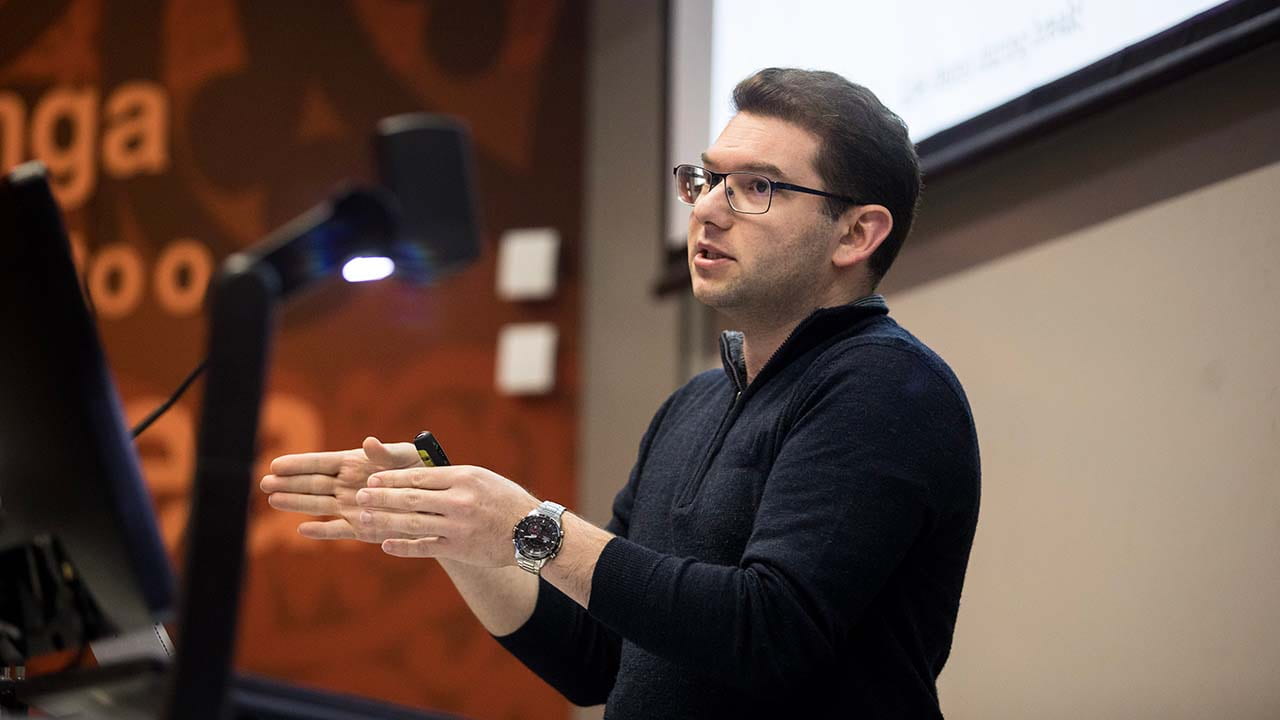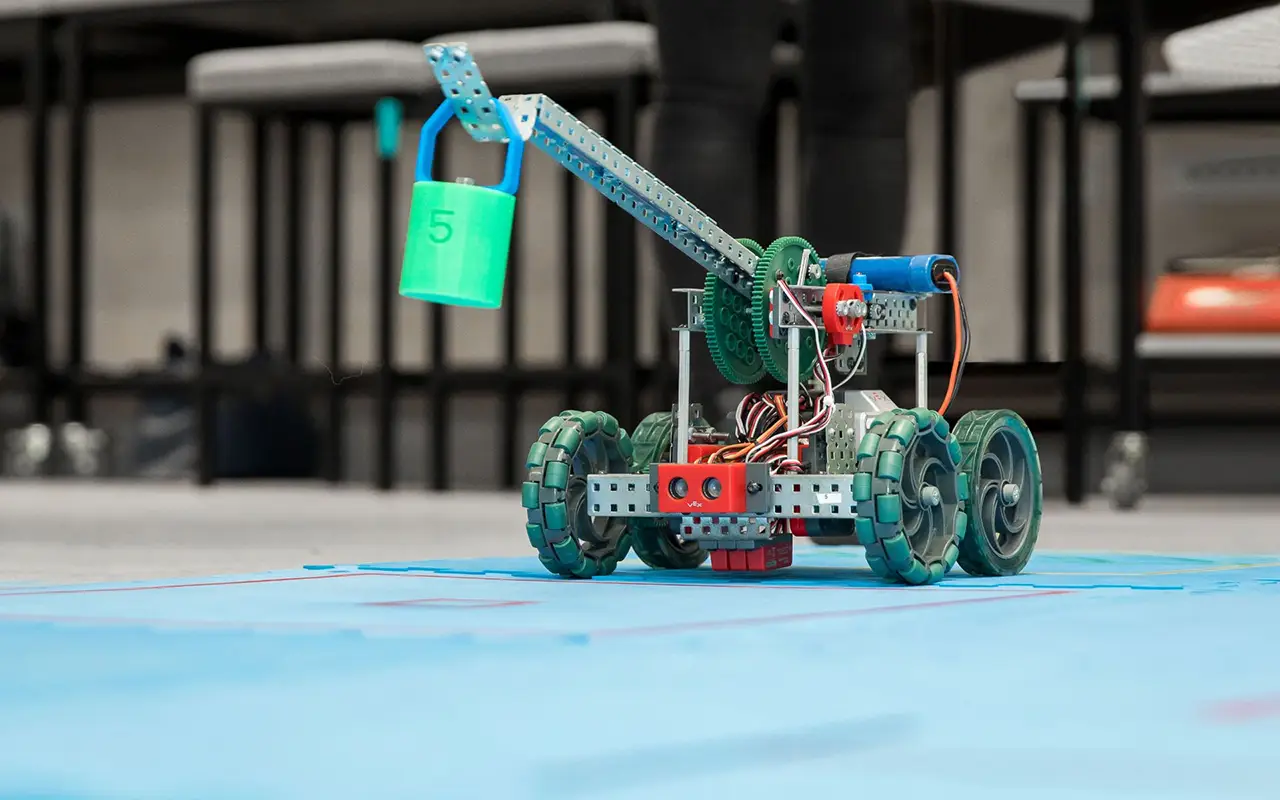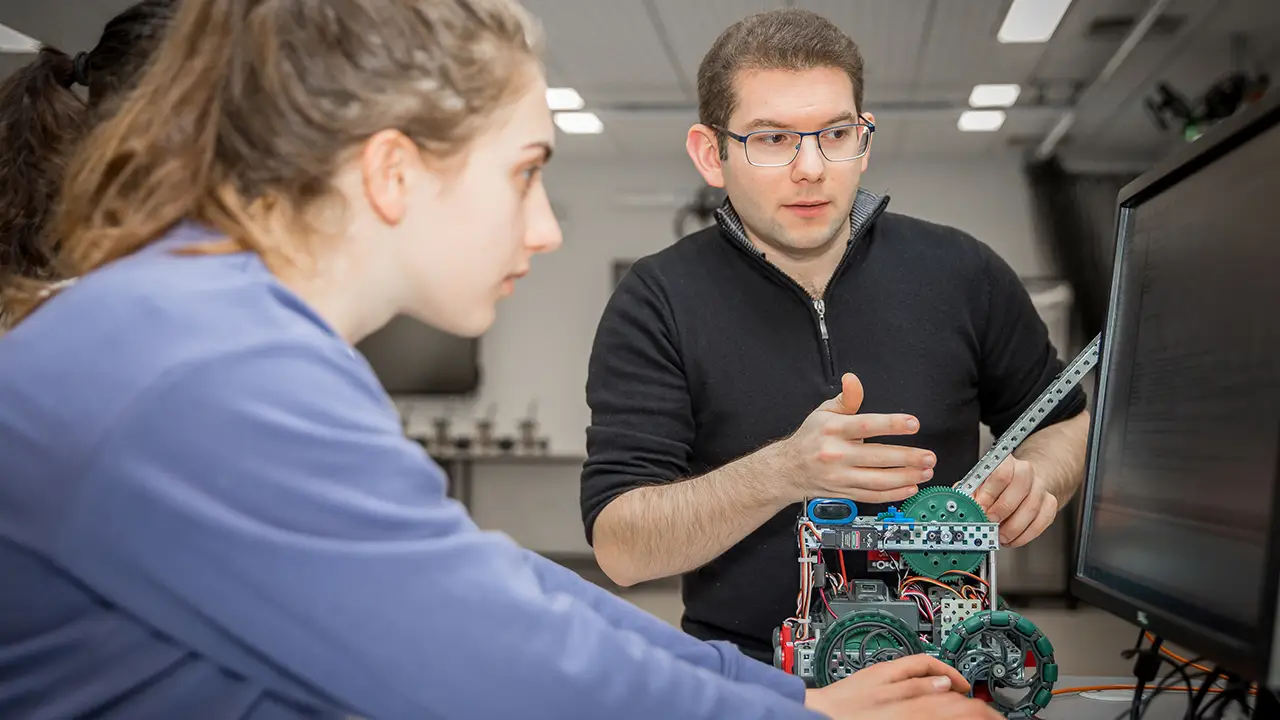Constructive Failure story: Technological trials and institutional hurdles
In the second instalment of our Constructive Failure series, we present the story of a Mechanical Engineering lecturer whose vision for remote robotics learning highlighted the complexities of innovation within academia.
A second-year course on programming robots, MECHENG 201 is the brainchild of Hazim Namik. His course, Introduction to Mechatronics, is structured as a dynamic, project-based learning experience: students are provided with an eight-week window to complete their assignments. Earlier student feedback had indicated a critical need for more time with the robots for testing. The constraints were clear: the large student numbers, limited physical lab space, and rigid class schedules hindered extended hands-on experience.

Remote lab gets set up
Understanding the importance of mastering control of a VEX robot,1 Hazim thought of an innovative solution – a ‘remote lab’ system. Once developed and set up, this system would grant students the flexibility to operate robots from their homes outside of regular class hours, enhancing their learning experience and addressing the need for more practical engagement.
It seemed like the perfect solution.
The development of this system was a collaborative effort, involving final year students and the faculty’s IT team. Together they created custom software for remote VEX robot control. Hazim also secured approval for remote network access (VPN) and introduced the MyPC software to manage equitable computer bookings, ensuring every student had a fair chance to use the lab.
In the realm of technology, the software seemed to work perfectly, effectively meeting its objectives. Yet before Hazim had managed to properly introduce the remote lab into his teaching, problems started to emerge.

Figure 1: A VEX robot in action.
Technical trial after trial
The project initially flourished with local Engineering Faculty IT support, but as the University underwent restructuring and its services centralised, new hurdles emerged. The MyPC system, crucial for fair access, began to crash frequently. Despite it already being used university-wide for its computer labs, the centralised IT support for related issues became a bottleneck, with resolutions taking months, causing frustration and impeding progress.
A pilot later in 20192 revealed the system’s potential but it also brought to light several challenges related to institutional infrastructure. The reliance on Wi-Fi technology caused occasional disconnections, requiring manual resets. More importantly, despite its earlier approval, the continuous absence of VPN access for student personal devices forced them to be physically present on campus, raising concerns for safety (staying after hours) and accessibility (travel and flexibility).
Then, the COVID-19 pandemic struck, followed by a move to a new Engineering building, further disrupting the momentum and creating new practical challenges.

An unresolved journey
Hazim’s story concludes without a resolution. It has been eight years since his first attempt to set up a reliable ‘remote lab’ for his students.
Ultimately, it seems, Hazim’s struggle is not so much with the technology as a lack of recognition and infrastructure support. His experience serves as a cautionary tale and a call to action for the University to provide practical and responsive support to match its proclaimed encouragement for innovation.
And it stands as a testament to the challenges educators face when institutional support falls short of its promises, leaving innovative projects in limbo.
Reflection and resilience
Despite the experienced setbacks, Hazim’s dedication has not faltered. He recently pivoted the project into a technical development opportunity, running research projects with his students to further the technology.
Through this experience, he has also learned valuable lessons about persistence, and adaptability (or ‘pivoting’, as he calls it). He has also recognised the need to foster relationships within the institution – such as with the faculty’s Business Resource Managers (BRM) who can help teaching staff navigate bureaucratic complexities.
We’re looking forward to the day when Hazim’s goal is achieved, and every robotics student in Engineering has the chance to use the lab remotely, online.
Notes
Hazim’s experience was shared at the ‘Epic Fails’ session of the Learning Futures Community of Interest in February 2024. If you enjoyed it, make sure to join the Learning Futures CoI and stay tuned for more stories of failure in teaching.
- VEX Robotics, managed by the Robotics Education & Competition Foundation (RECF), is a subset of Innovation First International. It’s a program designed for students from elementary to university level. The term ‘VEX’ is not an acronym but simply the name of the program. ↩
- In 2019, Hazim was awarded the CLeaR SEED fund grant for innovation in teaching to further develop and trial this project. ↩
